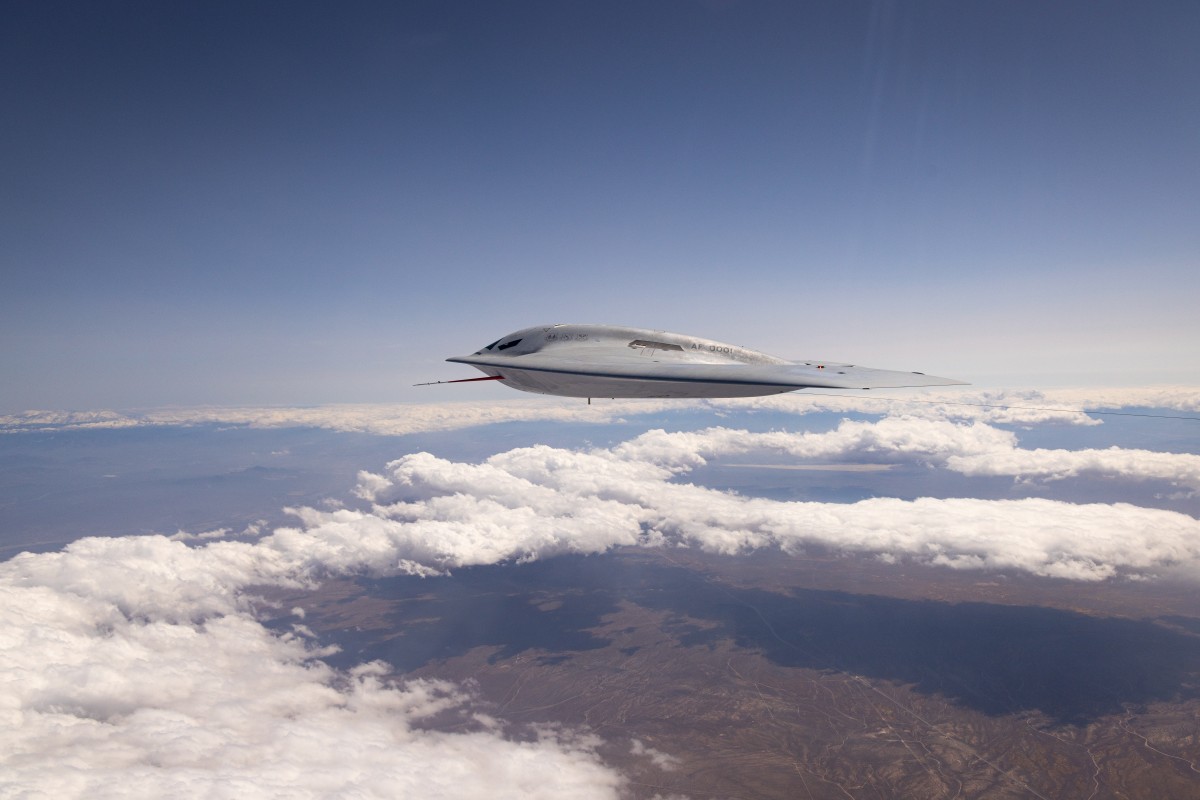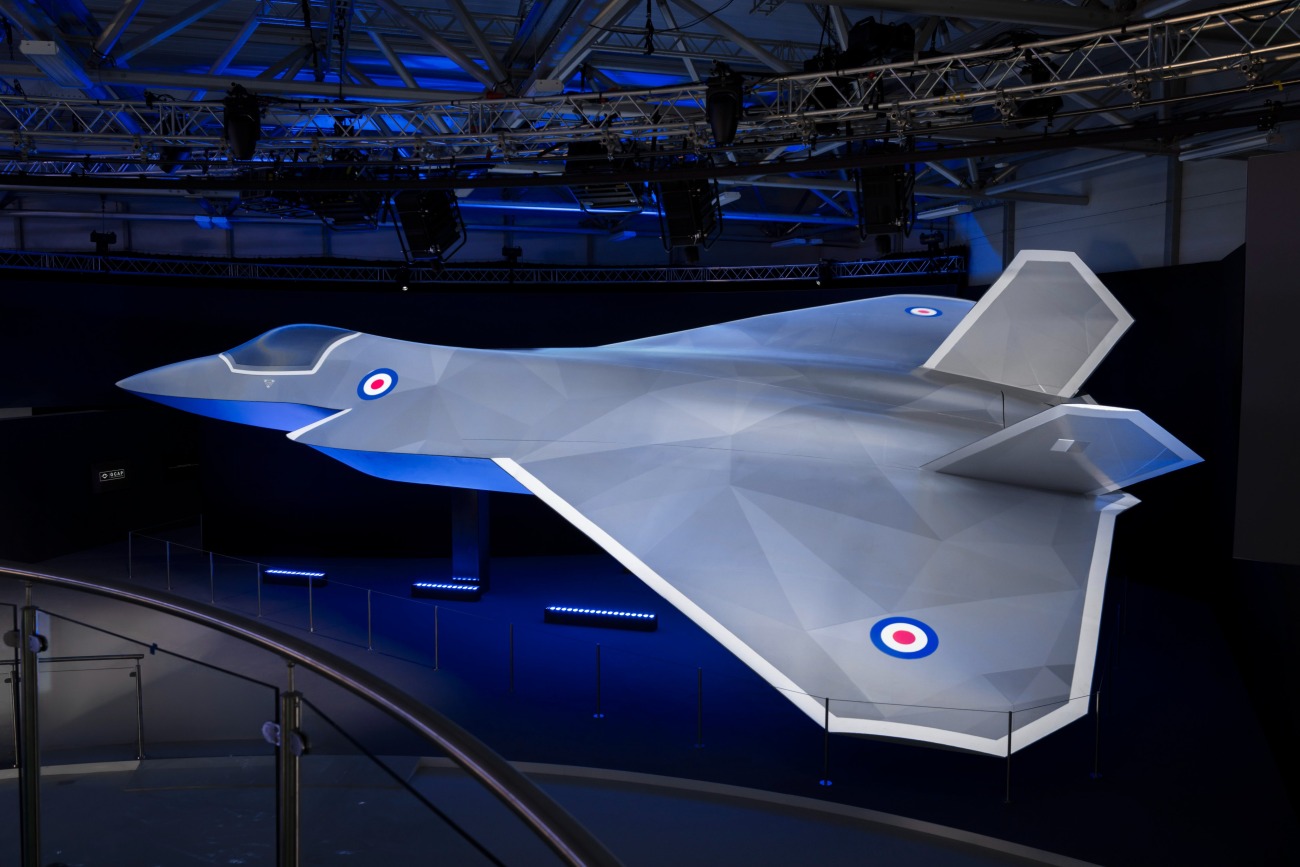After B-21 Raider, World’s 2nd Sixth-Generation Combat Aircraft Project Gets Green Light From British PM

The next-generation Global Combat Air Program (GCAP) being developed by the trilateral alliance of the UK, Japan, and Italy has received a green light from London. If all goes according to plan, this grouping could unveil the world’s second sixth-generation aircraft unless China springs some surprise.
The future of the GCAP ran into uncertainty earlier this year as the UK’s Labor government, helmed by Keir Starmer, launched the Strategic Defence Review and refused to commit to the GCAP in July 2024. Experts interpreted the reticence to take a firm position on the project as the end of the road for this next-generation fighter program.
However, the UK Prime Minister finally approved the construction of the multibillion-pound fighter jet in a meeting with some ministers on November 5, allaying concerns about a potential axing of the project, as reported by The Financial Times. An official announcement will be made in the coming weeks.
The GCAP is a merger of the sixth-generation fighter programs of the UK and Japan, the Tempest and the F-X, respectively. In a separate development, when probed on the future of the Tempest, British Defence Minister Maria Eagle said, “Positive progress on GCAP continues, with over 3,500 people employed on future combat air.”
The Defense Minister also revealed that the country had ratified the pact for the establishment of the GCAP International Government Organization, or GIGO, which will supervise the aircraft’s development. According to recent reports, Japan has also ratified the pact, and Italy is expected to follow suit in the coming weeks.
In 2022, the three nations established the GCAP alliance to pool their resources and expertise and develop a sixth-generation aircraft with cutting-edge technology. They believe the aircraft would improve their standing against China, Russia, and North Korea.
The alliance has set a rather ambitious and challenging induction date: 2035.
AfriPrime App link: FREE to download...
While there have been hiccups, Britain’s green light and the impending ratification from all three countries mean that the projecting is running apace. If all goes to plan, the aircraft produced under the GCAP would be only the second sixth-generation aircraft in the world after the American B-21 Raider.
The B-21 was conceived in 2011, and major development contracts were awarded in 2015. After keeping the project under wraps for several years, the US finally unveiled the sixth-generation bomber in 2022.
The Raider took its first flight in November 2023. At least three B-21s are currently in various stages of testing, none reporting a hitch. The bomber is planned to enter service by the mid-2020s.

A B-21 Raider conducts flight testing, which includes ground testing, taxiing, and flying operations, at Edwards Air Force Base, California.
Though China is also developing its sixth-generation bomber, dubbed ‘H-20,’ Western analysts believe it will take a few years before the aircraft is ready for unveiling. Given Beijing’s penchant for springing surprises, nobody can predict when the Chinese bomber will be ready for a debut.
Against that backdrop, it is possible that the combat aircraft produced under the GCAP program would become only the second sixth-generation aircraft in the world. The trilateral grouping had earlier stated that the aircraft would take its first flight by 2027.
Two other next-generation programs are under development: the US Next Generation Air Dominance (NGAD) and the Future Combat Air System (FCAS). Of these, the NGAD has run into uncertainties due to staggering costs that have necessitated a re-evaluation by the Pentagon, and the European FCAS has had a sluggish start due to differences between France and Germany.
Although there is still some concern about the project’s future, the GCAP is zooming ahead of its rivals for now.
The GCAP Is Coming
The GCAP partners assert that the aircraft will rank among the world’s most sophisticated, interoperable, flexible, and networked fighter jets. The program aims to replace the Mitsubishi F-2 used by the Japan Air Self-Defense Force and the Eurofighter Typhoon used by the Italian Air Force and the Royal Air Force.
The GCAP International Government Organization, or GIGO, will be established by the end of this year. The GIGO would be headquartered in the UK and headed by a Japanese official.
Italy is expected to provide the first leader of the company associated with the GIGO, which will include Leonardo of Italy, Mitsubishi Heavy Industries (MHI) of Japan, and BAE Systems PLC of Britain. GIGO would be responsible for establishing the overall capabilities required for the aircraft.
Although the GIGO has not yet been established, the industry partners are already dedicated to creating new platforms and technologies that are necessary for the fighter jet of the future.
For example, Japan’s MHI recently unveiled concepts for Collaborative Combat Aircraft (CCA) that will fly alongside the sixth-generation fighter in a manned-unmanned teaming (MUMT) configuration. The concept design was on display at an exhibition in Tokyo.
In July this year, the three GCAP partner countries showcased the new concept model of their upcoming combat aircraft at the Farnborough International Airshow. The concept model featured a bigger wingspan than designs unveiled previously and a far more advanced design to enhance the future combat aircraft’s aerodynamics.

The planned combat air system will include a core fighter aircraft and unmanned “adjuncts” such as drones, advanced sensors, and networked data systems powered by cloud computing and artificial intelligence.
Thanks to its software-driven interactive cockpit, integrated sensor array, intelligent weapons system, and next-generation radar, the next-generation combat aircraft will provide more data than its current equipment.
Some British media reports stated that the next-generation Tempest aircraft (as it will be known in the UK) developed under the GCAP will feature hypersonic missiles and Directed Energy Weapons (DEWs). However, there is no official confirmation yet.
Moreover, as it zooms ahead of its contemporaries, the GCAP grouping seeks to acquire an export-oriented first-mover advantage in the sixth-generation combat aircraft market.
AfriPrime App link: FREE to download...
- Questions and Answers
- Opinion
- Motivational and Inspiring Story
- Technology
- Live and Let live
- Focus
- Geopolitics
- Military-Arms/Equipment
- Beveiliging
- Economy
- Beasts of Nations
- Machine Tools-The “Mother Industry”
- Art
- Causes
- Crafts
- Dance
- Drinks
- Film/Movie
- Fitness
- Food
- Spellen
- Gardening
- Health
- Home
- Literature
- Music
- Networking
- Other
- Party
- Religion
- Shopping
- Sports
- Theater
- Health and Wellness
- News
- Culture

